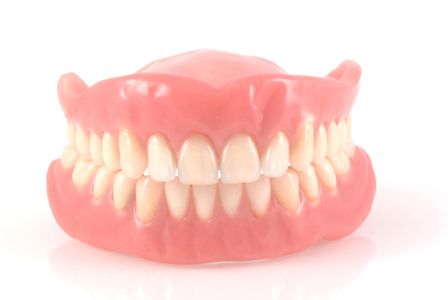
Dentures are custom-made to fit the unique contours of an individual’s mouth and provide a natural-looking smile. If you currently wear dentures, you may notice over time that they don’t fit the way they used to. In this case, they may need to be relined. Keep reading as we walk you through the process of denture relining and provide insights into what you can expect from this process.
What Is a Denture Reline?
Denture relining is a process aimed at improving the fit and comfort of removable dentures. Over time, due to natural changes in the gums and bone structure, dentures may become loose or ill-fitting. Relining involves adding a new layer of material to the inner surface of the denture base, which enhances the grip and stability of the prosthetic.
This procedure can help alleviate discomfort, prevent sore spots, and restore the proper function of dentures. By ensuring a more secure fit, denture relining enables individuals to confidently eat, speak, and smile, while also minimizing the risk of complications associated with loose-fitting dentures.
Hard Denture Relining
In this method, a durable acrylic material is added to the inner surface of the denture base. The material is customized to match the contours of the wearer’s gums, providing a snug and secure fit. Hard denture relining offers excellent longevity and resistance to wear, making it a popular choice for long-term denture stabilization.
In the case of a hard denture reline, acrylic is added to the impression to repair or create a new denture base. This process may require the use of a temporary restoration, and typically takes more than one day to complete.
Soft Denture Relining
This technique involves using a soft, pliable material, typically a silicone-based substance, to line the denture base. This offers increased comfort and reduced pressure on this or sensitive gum tissues thin or those who have just undergone oral surgery.
Your dentist will clean your dentures thoroughly. Then, they will remove some of the denture material that contacts the gums. Subsequently, a special resin will be applied and pressed onto the gums to create a hardened impression, ensuring a tighter seal and improved comfort.
Temporary Denture Relining
Also known as chairside or immediate denture relining, this approach is a quick and temporary solution to address immediate denture discomfort. While it provides temporary relief, this type of relining is not as long-lasting as hard or soft relining and may require additional adjustments in the future.
A soft, temporary lining material is applied directly to the inner surface of the denture before it’s placed back in your mouth. Then, your dentist will make the necessary adjustments. They will also smooth any rough edges or excess material. You’ll come back in at a later date to discuss further treatment options, like a hard or soft relining or new dentures.
How to Know When You Need a Denture Reline
It’s essential to recognize the signs indicating that your dentures may require a relining to ensure their optimal fit and function. Here are a few key indicators to watch out for:
- Cracks or thin lines forming in the denture
- Worn chewing surfaces or plates
- Trouble chewing or speaking
- Changes in facial appearance
- Loose or unstable fit
- Clicking sounds
- Gum irritation
- An infection
- Sore spots
- Warping
About the Practice
At Galleria Dentistry, we provide a comprehensive array of oral health services, including dentures as a solution for missing teeth. Our skilled team offers denture relining treatments to enhance the fit and comfort of your restorations. We are also happy to provide guidance on proper care for your newly relined dentures. For more information on their smile makeover options or to schedule a consultation, you can call them at (239) 592-5112 or visit their website.
